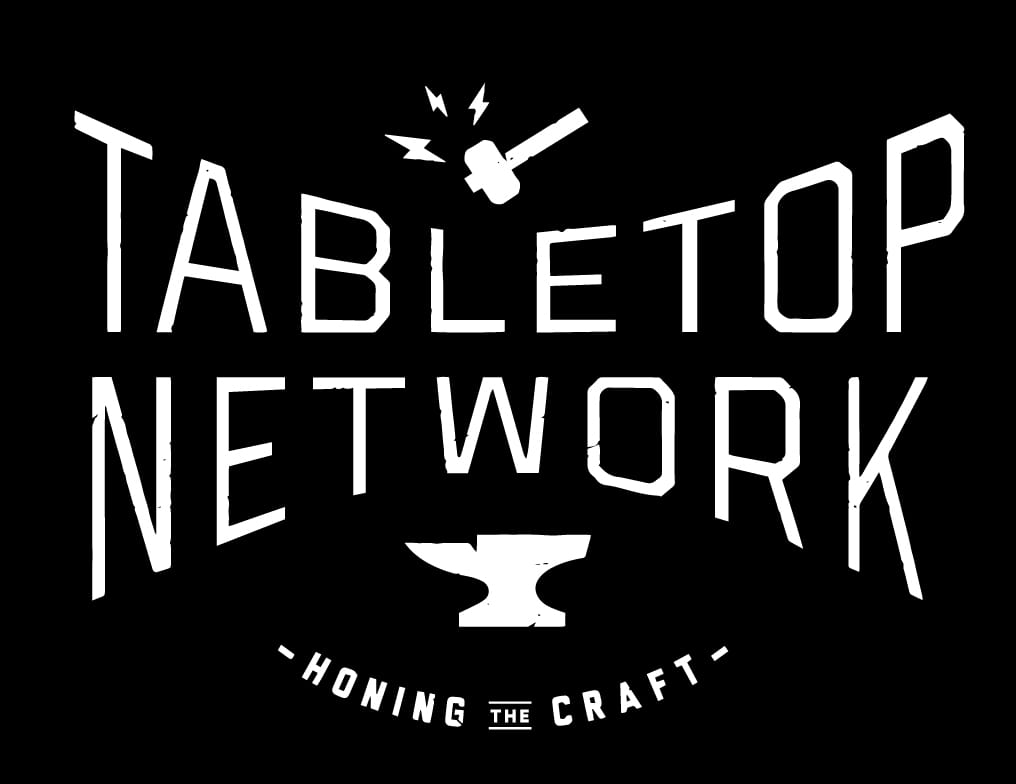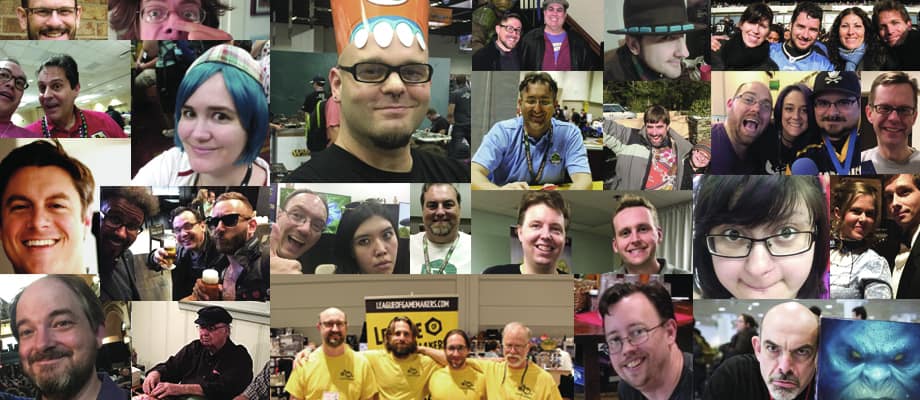
In this three part series, read about the League’s secret mission in coordination with Stonemaier Games to select the top 10 games every designer should play at least once!
—
KEY LINKS
Part I, Jamey Stegmaier introduced the challenge, and we our methods.
Part II, criteria for selecting games, and individual league picks.
Games Designers Play – James Mathe polled designers from top BGG choices.
Top 10 List on BGG – open voting, add games and thumb up your top 10.
FINAL ADJUSTMENTS
Before we reveal the “Top 10 Games Every Designer Should Play at Least Once” for Stonemaier Games Design Day 2014, I wanted to mention two additional factors:
1) Round 2, 15 points. League members were shown the top 10 list and given a week and an additional 15 points to add to any titles. The goal was to allow minor fixes with group consensus. For example, there were no worker placement games that actually made it in the top 10 (due to splits of the vote), so many of us used our 15 points to throw support on those titles. Funny enough, we were still divided on WP titles, and again none made it! We debated if we should edit the #10 spot and force it, but we left it alone.
Notably, only one title shifted out of the top 10 in round 2. Resistance at #10, dropped out and #11 Forbidden Desert jumped in all the way up to #6.
I also attempted my own Diplomacy experiment and secretly corresponded with Leaguers to vote up Dead of Winter, managing to get it from rank #47 to rank #15! I’ll admit that may have corrupted round 2 data a bit, but I digress…
2) Jamey Stegmaier’s input. Jamey was given final edits on the list, and he made two key changes on #9 and #10. Firstly, and perhaps expectedly as a publisher of fine worker placement titles, he fixed our worker placement issue by taking the top ranked game in that genre (Stone Age) and placed it at #10. He dropped a personal favorite of his, Magic: The Gathering, which admittedly didn’t fit the time constraints of this event. Secondly, he dropped Acquire due to personal taste and design philosophies and saw fit to put a superb tile placement game in it’s place, Carcassonne (which did very well in subsequent BGG polling).
Without further ado, the TOP TEN Games that Every Designer Should Play*:
#1 – DOMINION
10 League nominations. Designer: Donald X. Vaccarino
Quotes: “Dominion is THE deck building game. It is streamlined and establishes the fundamental paradigms for the deck building mechanics.” – Luke Laurie
“This game is a perfect example of reaching amazing depth with a very simple game system.” – Jeff Cornelius
#2 – LOVE LETTER
8 League nominations. Designer: Seiji Kanai
Quotes: Minimalism. “The lesson is that is that tight design and strategic gameplay is possible in ONLY 16 cards. Less is more.” – Peter Vaughan
“Create intrigue with only 16 cards, each with only a number and a sentence.” – Kelsey Domeny
#3 – 7 WONDERS
6 League nominations. Designer: Antoine Bauza
Quotes: “Simultaneous card drafting civ building game in which innovative neighbor mechanic makes it the same with 3-7 players” – Brad Brooks
“A new designer would learn a great deal about iconography, set collection, and card drafting.” – Chris Strain
#4 – ZENDO
5 League nominations. Designer: Kory Heath
Quotes: “Meta-primer on how players perceive rules and complexity” – Christina Major
“One of the few games that makes you figure out what the rules of the game are as you play. Important for designers to realize how far you can take this idea.” – Tom Jolly
#5 – HANABI
6 League nominations. Designer: Antoine Bauza
Quotes: “Unlike most cooperative games, Hanabi operates on hidden information–hidden from self.” – Mike Domeny
“A co-op game with little to no ‘quarterbacking’” – Jeff Cornelius
#6 – FORBIDDEN DESERT
4 League nominations. Designer: Matt Leacock
Quotes: “Team success depends on interacting with the mechanics through the mindset of the theme.” –Kelsey Domeny
“Simple primer on cooperatives, strong escalation of consequences mechanics” – Christina Major
#7 – DIPLOMACY
4 League nominations. Designer: Allan B. Calhamer
Quotes: “Random elements not needed for cutthroat strategy. Simple, deterministic area control, everything boils down to interplayer negotiations.” – Stephen DeBaun
“Negotiation. You cannot succeed without support. Betrayal is inevitable. This is a classic, brilliant game to study for player dynamics.” – Peter Vaughan
#8 – FATE RPG SYSTEM
4 League nominations. Designers: Fred Hicks and Rob Donoghue
Quotes: “Put shared storytelling first. Turns the RPG paradigm on its head: use mechanics not to model reality, but to facilitate story.” – Stephen DeBaun
“RPGs are a huge influence on boardgames and war games and cooperative games and CCGs, and all game designers should play one at some time in their careers.” – Tom Jolly
#9 – CARCASSONNE
2 League nominations. Designer: Klaus-Jürgen Wrede
Quotes: “Carcassonne is a classic tile laying game with extremely simple rules and a truly Euro farming theme.” – Luke Laurie
“Strategic tile placement with a variety of expansion options” – Nathan Cornelius
#10 – STONE AGE
4 League nominations. Designer: Bernd Brunnhofer
Quotes: “Early worker placement with unique worker pool building mechanism.” – Norv Brooks
“Light Euro worker placement game that uses dice, randomness, and hidden information to reduce analysis paralysis.” – Luke Laurie
*This is a subjective list.
HONORABLE MENTIONS:
– (9A) MAGIC: THE GATHERING
– (10A) ACQUIRE
#11 – KING OF TOKYO
#12 – RESISTANCE
#13 – PANDEMIC
#14 – STONE AGE (MOVED INTO TOP 10)
#15 – DEAD OF WINTER
#16 – LORDS OF WATERDEEP
#17 – T’ZOLKIN
#18 – TWILIGHT STRUGGLE
#19 – CASTLES OF BURGUNDY
#20 – AGRICOLA
FINAL THOUGHTS
Thanks for reading this series! Thanks especially if you voted and submitted a top 10 on our first post. We appreciate everyone’s list of top games they would recommend. Here’s something I learned along the way, worth mentioning: There is no right answer to the top 10 games question.
There’s 70,000+ games out there, and every one of them has the potential to teach you a lesson in game design. Maybe it’s a lesson that only you need to learn, and not for someone else due to genre or play style. That’s ok.
Maybe it’s a positive lesson, or a negative lesson, or a lesson that only comes out after multiple plays. Maybe it’s a game on the BGG top 100 or not ranked at all yet. It’s all good. Many of us became quite passionate about the games on our own lists, and the BGG list tells me that people value games for a variety of reasons. A key lesson (for me) turned out to be:
Play many games, and be open to the lessons that they have to teach.
—
I wanted to extend a sincere thanks to Jamey Stegmaier and Stonemaier Games for the invitation to select the events at this event, and to the League for embarking on this adventure.
We wish the best to the designers attending the Design Day, and we look forward to playing the games that those designers will produce!








